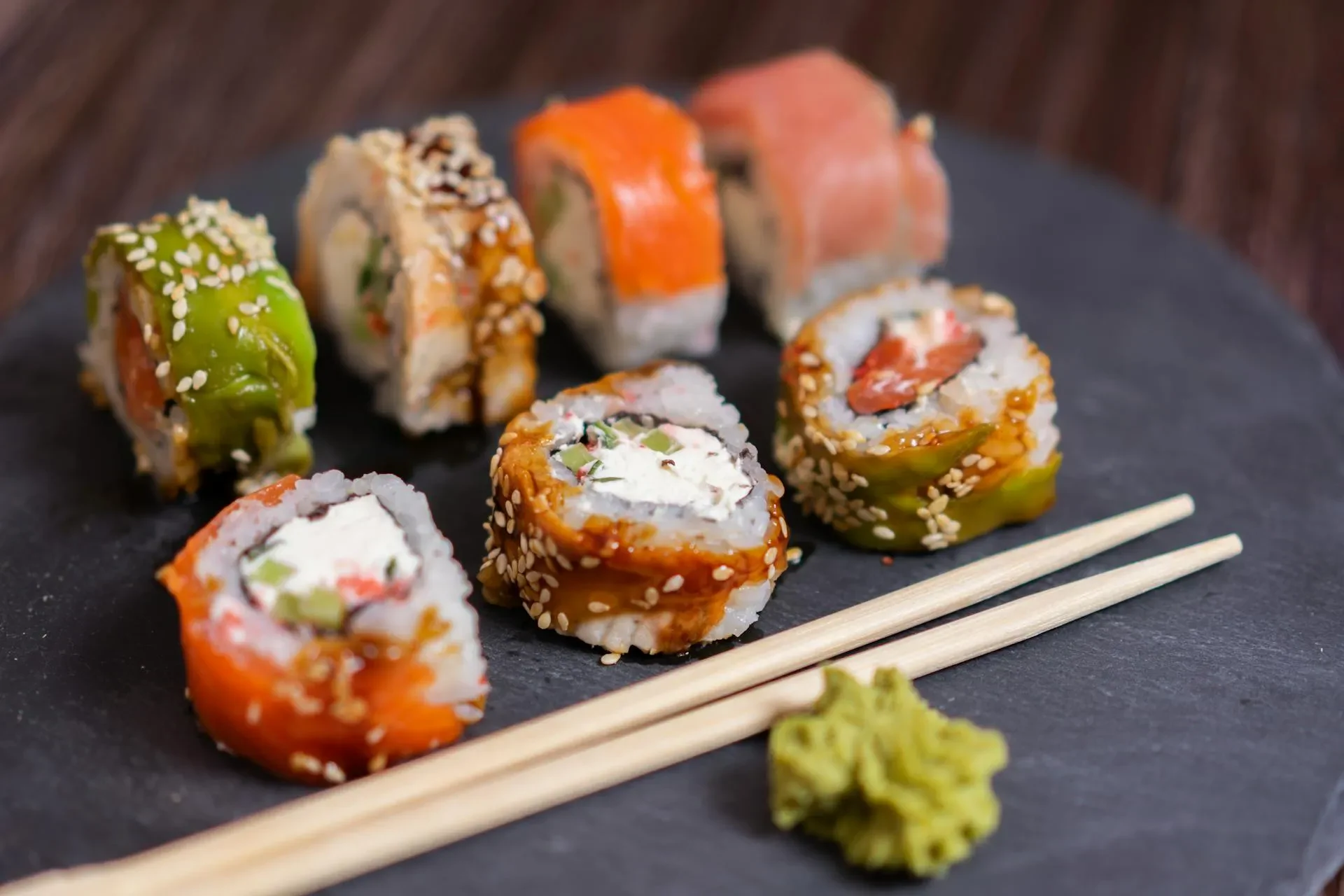Mar 01, 2024, 00:00
Nigirizushi consists of an oblong
A popular variant of pizza in Italy is Sicilian pizza (locally called sfincione or sfinciuni)
Nigirizushi consists of an oblong mound of sushi rice that the chef presses between the palms of the hands to form an oval-shaped ball, and a topping (the neta) draped over the ball. It is usually served with a bit of wasabi; neta are typically fish such as salmon, tuna or other seafood. Certain toppings are typically bound to the rice with a thin strip of nori, most commonly octopus (tako), freshwater eel (unagi), sea eel (anago), squid (ika), and sweet egg (tamago). One order of a given type of fish typically results in two pieces, while a sushi set (sampler dish) may contain only one piece of each topping. Gunkanmaki is a special type of nigirizushi: an oval, hand-formed clump of sushi rice that has a strip of nori wrapped around its perimeter to form a vessel that is filled with some soft, loose or fine-chopped ingredient that requires the confinement of nori such as roe, nattō, oysters, uni (sea urchin roe), corn with mayonnaise, scallops, and quail eggs. Gunkan-maki was invented at the Ginza Kyubey restaurant in 1941; its invention significantly expanded the repertoire of soft toppings used in sushi. Temarizushi is a sushi made by pressing rice and fish into a ball-shaped form by hand using a plastic wrap. Sushi-meshi (鮨飯) (also known as su-meshi (酢飯), shari (舎利), or gohan (ご飯)) is a preparation of white, short-grained, Japanese rice mixed with a dressing consisting of rice vinegar, sugar, salt, and occasionally kombu and sake. It must be cooled to room temperature before being used for a sushi filling, or it will get too sticky while seasoned. Traditionally, it is mixed with a hangiri (a round, flat-bottom wooden tub or barrel) and a shamoji (a wooden paddle). Sushi rice is prepared with short-grain Japanese rice, which has a consistency that differs from long-grain strains such as those from India, Sri Lanka, Bangladesh, Thailand, and Vietnam. The essential quality is its stickiness or glutinousness, although the type of rice used for sushi differs from glutinous rice. Freshly harvested rice (shinmai) typically contains too much water and requires extra time to drain the rice cooker after washing. In some fusion cuisine restaurants, short-grain brown rice and wild rice are also used. There are regional variations in sushi rice, and individual chefs have their methods. Most of the variations are in the rice vinegar dressing: the Kantō region (or East Japan) version of the dressing commonly uses more salt; in Kansai region (or West Japan), the dressing has more sugar. The dark green seaweed wrappers used in makimono are called nori (海苔).
Nori is a type of algae traditionally cultivated in the harbors of Japan. Originally, algae was scraped from dock pilings, rolled out into thin, edible sheets, and dried in the sun, similar to making rice paper. Today, the commercial product is farmed, processed, toasted, packaged, and sold in sheets. The size of a nori sheet influences the size of makimono. A full-size sheet produces futomaki, and a half produces hosomaki and temaki. To produce gunkan and some other makimono, an appropriately-sized piece of nori is cut from a whole sheet. Nori by itself is an edible snack and is available with salt or flavored with teriyaki sauce. The flavored variety, however, tends to be of lesser quality and is not suitable for sushi. When making fukusazushi, a paper-thin omelette may replace a sheet of nori as the wrapping. The omelette is traditionally made on a rectangular omelette pan, known as a makiyakinabe, and used to form the pouch for the rice and fillings. The traditional grating tool for wasabi is a sharkskin grater or samegawa oroshi. An imitation wasabi (seiyo-wasabi), made from horseradish, mustard powder, and green dye, is common. It is found at lower-end kaiten-zushi restaurants, in bento box sushi, and at most restaurants outside Japan. If manufactured in Japan, it may be labelled 'Japanese Horseradish.' The spicy compound in both true and imitation wasabi is allyl isothiocyanate, which has well-known anti-microbial properties. However, true wasabi may contain some other antimicrobials as well.
